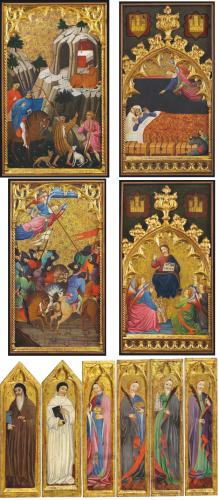Juan de Sevilla
Bio
Juan González de Grajal is not a household name in today’s world, nor, indeed, even in Spain or Sigüenza where he lived in the early 15th century. Grajal did, however, serve as Dean and Procurator of the Cathedral of Sigüenza and was wealthy enough to build a showy house on the main street of that city, emblazoned with his coat of arms.
In November 1415 he was named Bishop of Sigüenza but he did not have much time to make a name for himself before he died the following year. He was so obscure that his name is missing from the 96 pages of the 1646 Catalogue of Sigüenza’s Bishops by Diego Sánchez Portocarrero.
Nevertheless, he did attempt to leave a pious footprint by way of a chapel dedicated to St. Michael that he endowed in the Cathedral during the last years of his life, although even this would be transformed within a century. When Grajal built the chapel it did not open directly onto the north aisle of the Cathedral, the only side where there were aisle chapels. The original 12th century fortress-church had housed none: by Grajal’s time entry was through the San Marcos chapel next door
At some point in the ensuing decades the money that Grajal had allotted to maintain his chapel
must have run out, for in 1496 it was given to Francisco Martínez, though he did not keep it for very long.
By 1515 the space belonged to Francisco de Montemayor, who changed its dedication to that of the Annunciation, walled up the original entrance and relocated the access directly from the aisle, giving it an ostentatious portal and lavish decoration.
So why bother discussing Grajal’s chapel at all? The answer is that something from it has survived: the remaining panels of an altarpiece, or retablo, dedicated to St. Michael and bearing Grajal’s coat of arms, that appeared in the auction rooms of the Hôtel Drouot in 1968.

